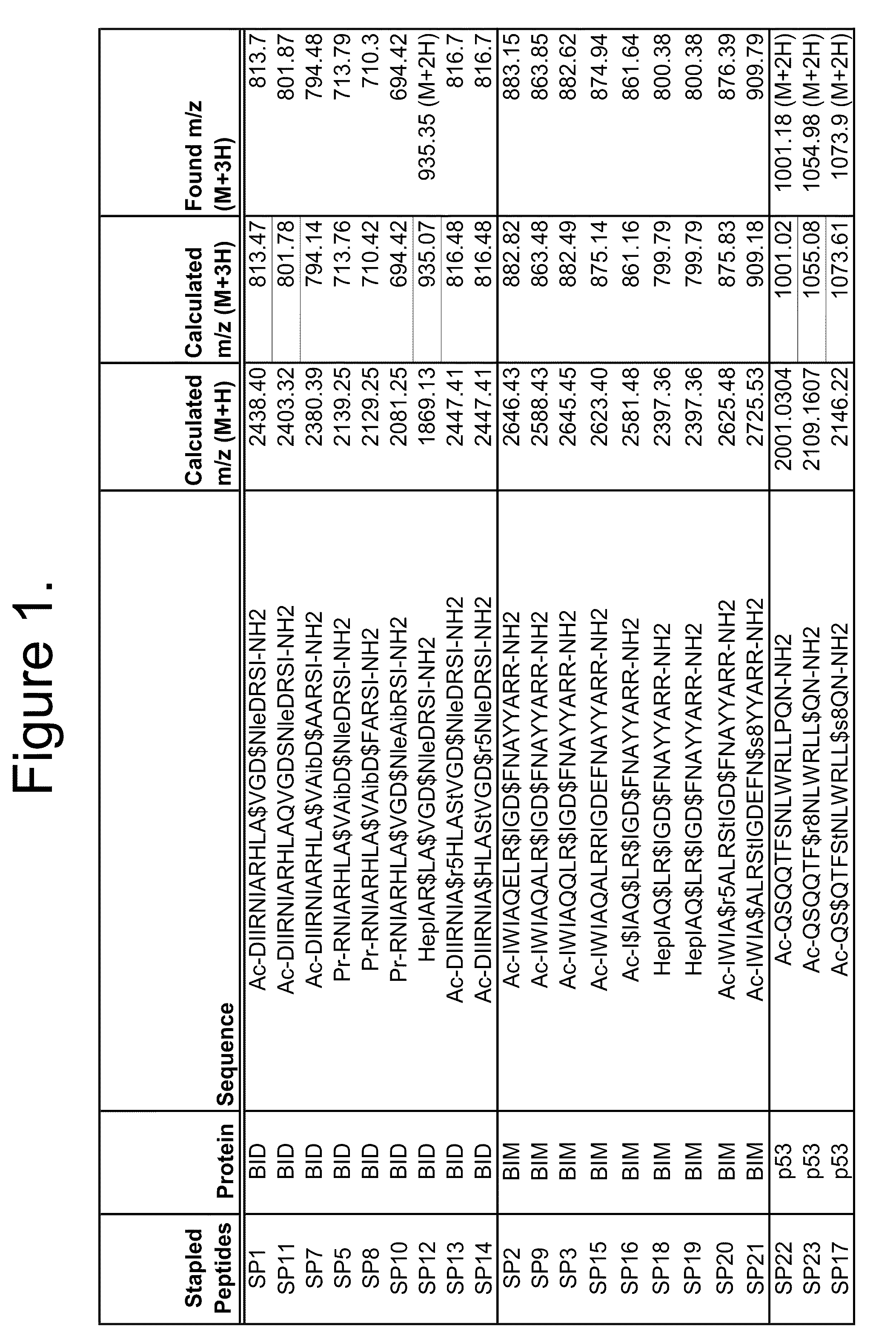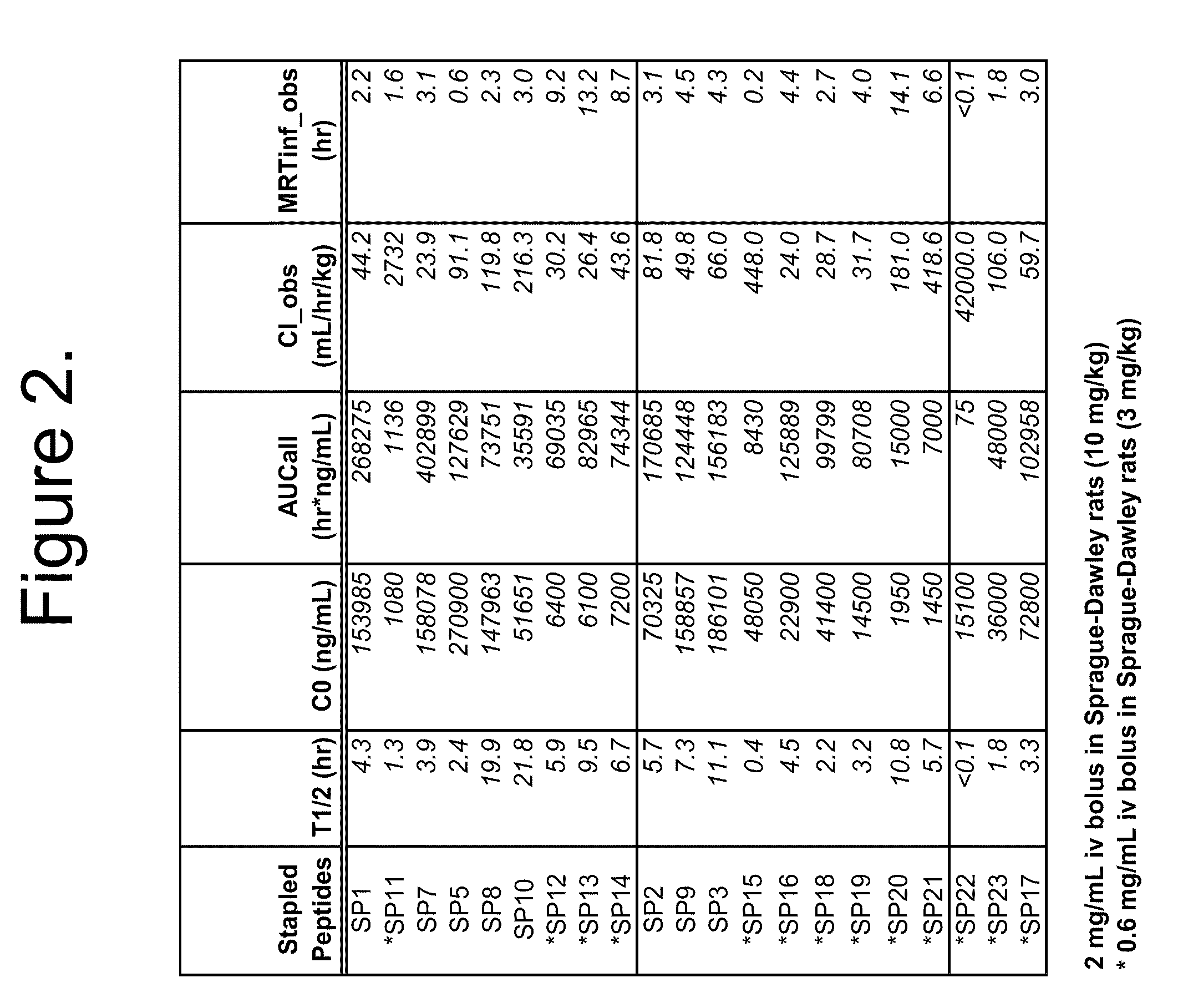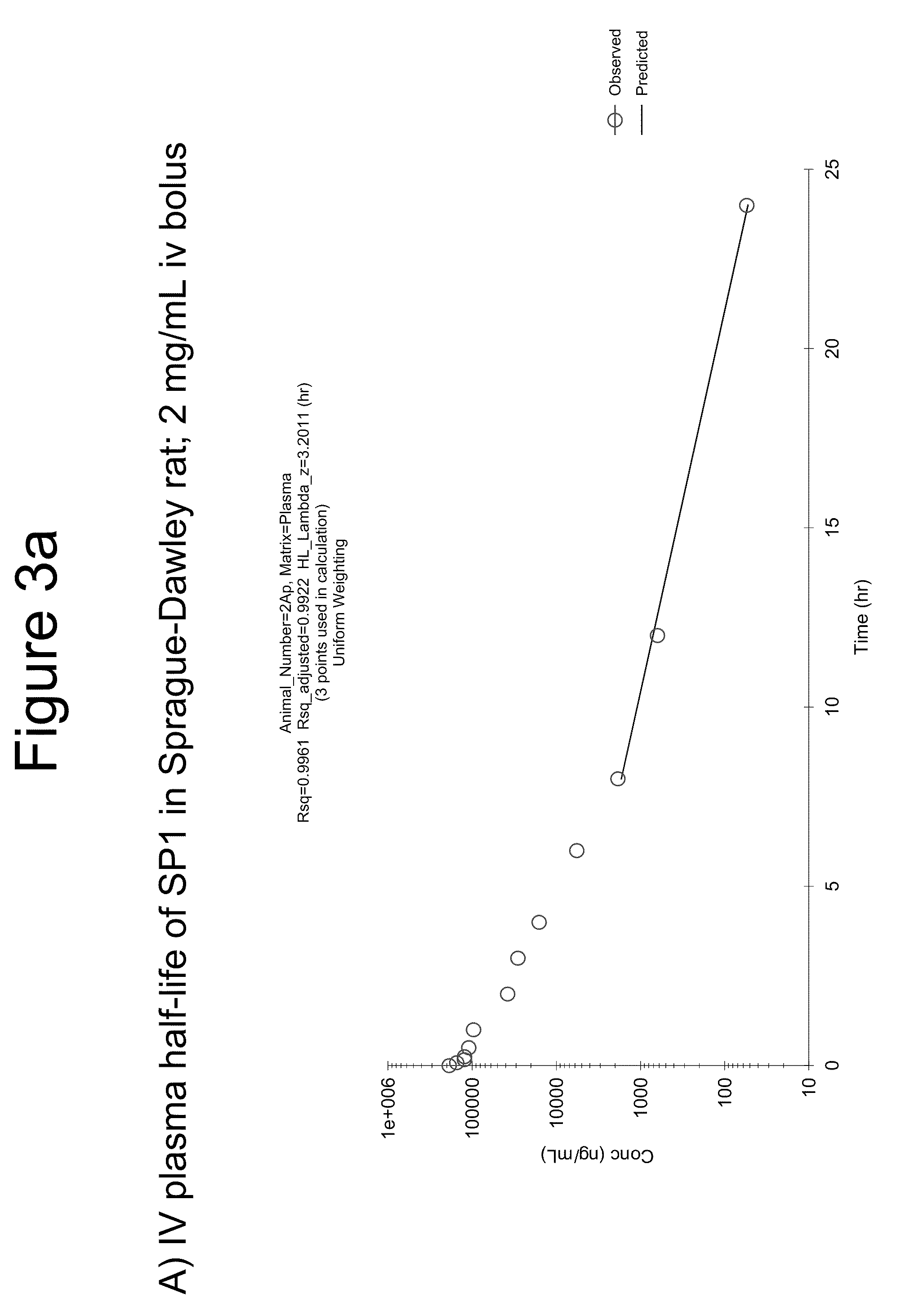Peptidomimetic macrocycles with improved properties
a macrocycle and peptidomimetic technology, applied in the field of peptidomimetic macrocycles with improved properties, can solve the problems of promiscuous binding, poor cell penetration, short peptides, etc., and achieve the effect of increasing the in vivo half-life of helical polypeptides
- Summary
- Abstract
- Description
- Claims
- Application Information
AI Technical Summary
Benefits of technology
Problems solved by technology
Method used
Image
Examples
example 1
Synthesis of Peptidomimetic Macrocycles of the Invention
[0287]α-helical BID, BIM and p53 peptidomimetic macrocycles were synthesized, purified and analyzed as previously described (Walensky et al (2004) Science 305:1466-70; Walensky et al (2006) Mol Cell 24:199-210; Bernal et al (2007) J. Am. Chem. Soc. 9129, 2456-2457) and as indicated below. The macrocycles used in this study are shown in FIG. 1. The corresponding uncrosslinked polypeptides represent the natural counterparts of the peptidomimetic macrocycles of the invention.
[0288]Alpha,alpha-disubstituted non-natural amino acids containing olefinic side chains were synthesized according to Williams et al. (1991) J. Am. Chem. Soc. 113:9276; Schafineister et al. (2000) J. Am. Chem. Soc. 122:5891 and Verdine et al PCT WO 2008 / 121767. Peptidomimetic macrocycles were designed by replacing two or more naturally occurring amino acids (see FIG. 1) with the corresponding synthetic amino acids. Substitutions were made at the i and i+4 or i...
example 2
Synthesis of N-Terminal Cross-linked SP-18 & SP19 macrocycles
[0291]
[0292]The peptides were elongated on a Thuramed Tetras automated multichannel peptide synthesizer starting with a 4-(2′4′-dimethoxyphenyl-Fmoc-aminomethyl)-phenoxyacetamido-norleucylaminomethyl linked polystyrene resin (Rink AM resin). The amino acids (5 eq) were coupled using standard solid phase protocols based on fluorenylmethoxycarbonyl (Fmoc) protection and 2-(6-Chloro-1H-benzotriazole-1-yl)-1,1,3,3-tetramethylaminium hexafluorophosphate (HCTU) as the coupling agent (5 eq). Double coupling was used during the automated process for all of the amino acids except for the α-methylated Fmoc-protected olefinic amino acids which were single coupled with longer reaction times. After the final amino acid was added to the peptide, the Fmoc group was removed and the free amine was acylated using acetic anhydride in 10% DIEA. The linear peptide was assembled as above on resin (0.5 mmol based on initial resin loading) incorp...
example 3
Sample and Standard Curve Preparation
[0293]For in vivo plasma stability studies 50 μL of 10 mM of each macrocycle in DMSO was combined with 9950 μL rat plasma (1:200 v / v) and mixed by vortexing (4 minutes). This stock was serially diluted in rat plasma to yield 9 standards (20-20,000, or 100-50,000 ng / mL range). High concentration (early time point) test samples were diluted 10:1 or 5:1 in blank plasma. All samples, including plasma blank, were combined 1:1 v / v with internal standard peptide in plasma.
PUM
| Property | Measurement | Unit |
|---|---|---|
| concentration | aaaaa | aaaaa |
| pH | aaaaa | aaaaa |
| temperature | aaaaa | aaaaa |
Abstract
Description
Claims
Application Information
 Login to View More
Login to View More - R&D
- Intellectual Property
- Life Sciences
- Materials
- Tech Scout
- Unparalleled Data Quality
- Higher Quality Content
- 60% Fewer Hallucinations
Browse by: Latest US Patents, China's latest patents, Technical Efficacy Thesaurus, Application Domain, Technology Topic, Popular Technical Reports.
© 2025 PatSnap. All rights reserved.Legal|Privacy policy|Modern Slavery Act Transparency Statement|Sitemap|About US| Contact US: help@patsnap.com



